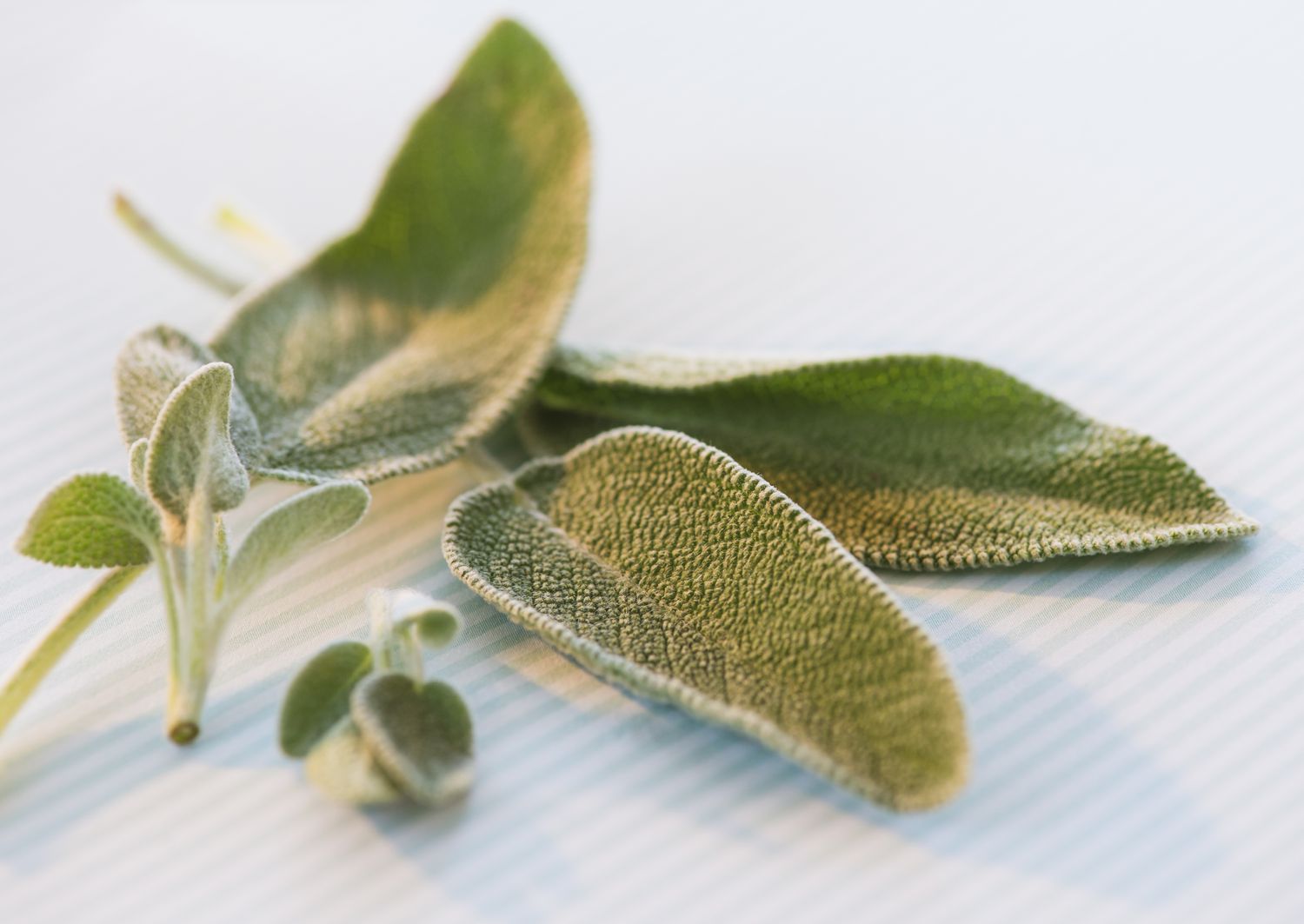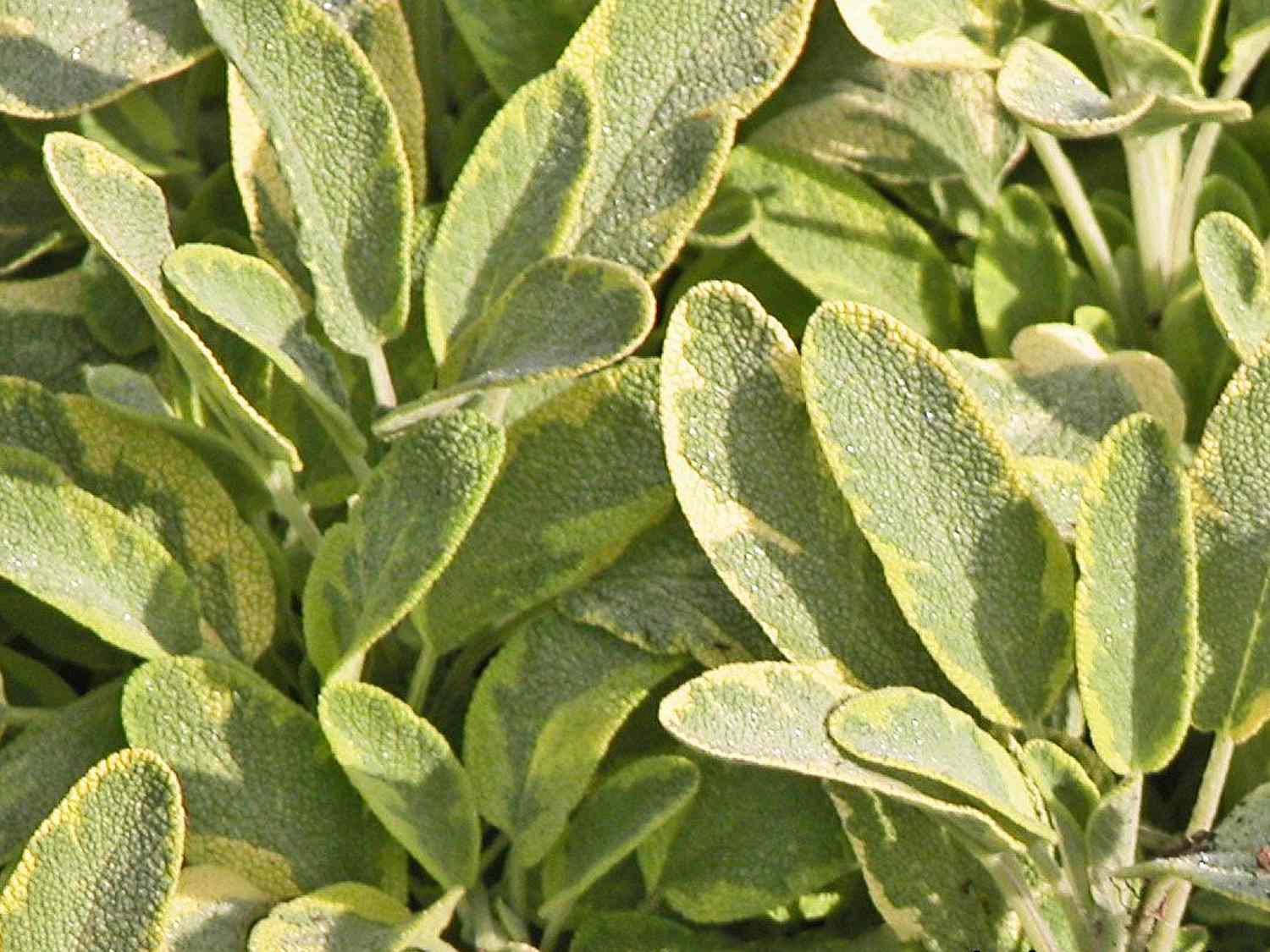Sage offers you handsome evergreen foliage in the form of a small mounding shrub. Sage is perennial in most areas of the South and comes in colorful selections, including golden, green, white, variegated, tricolor, and purple sage. Not to be confused with flowering salvias, which are ornamental and also called sages, garden sage is used to flavor foods and is essential to many poultry and holiday recipes.
Plant Attributes
| Common name | Sage |
| Botanical name | Salvia officinalis |
| Family | Lamiaceae |
| Plant type | Perennial shrub |
| Mature size | 2.5 feet tall |
| Sun exposure | Full sun to partial shade |
| Soil type | Well-drained |
| Soil pH | 6.0 to 7.0 |
| Bloom time | Early summer |
| Flower color | Bluish-lavender to pink-lavender |
| Hardiness zone | 4 to 10 |
| Native area | Northern Mediterranean |
Sage Care
In Zone 7 and north, sage is a hardy perennial, its leaves lingering on the stems through the winter. But sage usually does not survive the hot, humid summers of Zone 8 and farther south and is grown as a cool-weather annual in these areas.
Native to the Mediterranean, garden sage forms a sprawling shrub 8 to 36 inches tall and wide. Its velvety gray-green color blends well with the deeper greens of perennials or other herbs.
Golden sage brightens the garden with yellow green leaves that are as striking as flowers; it is popular mixed into a flower or herb border. The darker shade of purple sage blends well with other Mediterranean herbs, such as purple basil, rosemary, or silver-leafed plants like artemisia.
Light
Sage grows best in a sunny location with well-drained soil. For quickest results, start with purchased transplants in spring or fall.

Soil
Plant sage in well-drained, sandy soil with a pH of 6.0 to 6.7. Add sand along with organic matter to clay soil to improve drainage.
Water
It will tolerate drought and poor soil fertility but will produce better with consistent water.
Temperature And Humidity
In Zone 7 and north, sage is a hardy perennial, its leaves lingering on the stems through the winter. But sage usually does not survive the hot, humid summers of Zone 8 and farther south and is grown as a cool-weather annual in these areas.
Fertilizer
Add a slow-release fertilizer to the soil at planting, and fertilize each spring.

Types Of Sage
Tricolor sage (Salvia officinalis Tricolor) grows to 15 inches and has gray leaves streaked with purple and white. It has the same flavor as garden sage but is less cold hardy.
Growing to 15 inches tall with purple leaves, purple sage (Salvia officinalis Purpurea) has the same flavor as garden sage but is slightly hardier.
Often used in confined areas and as a winter houseplant, dwarf sage (Salvia officinalis Compacta) grows 8 inches tall. It is a miniature of garden sage, with the same gray-green color and traditional flavor. Dwarf sage performs better in Southern gardens and is more attractive year-round than garden sage. Berggarten is a selection that performs especially well in the South.
Golden sage (Salvia officinalis Aurea) grows to 15 inches with yellow-edged leaves. It is popular as an ornamental.
Pruning
The foliage of sage looks lifeless through winter and into spring, so prune plants each year in early spring cutting out the oldest growth to help stimulate new growth. In late spring, spikes of pinkish purple flowers will appear.
How To Grow Sage From Seed
To grow transplants from seed, start indoors six to eight weeks before the last frost, and set out transplants when the ground is warm. Or sow seeds directly in the garden after danger of frost is past, planting them about 1/4 inch deep. Seedlings should appear in two to three weeks. When they are about 2 inches tall, thin to 18 to 24 inches.

Sage Harvesting, Storage And Use
Lightly harvest plants the first year and then harvest as needed year-round; frequent harvesting helps keep the plant shapely. Pinch one leaf at a time, or cut an entire stem for a larger harvest. Allow two months between the last harvest and the first frost to ensure that new growth will have time to mature in winter.
Use sage fresh, dried, or frozen. To dry sage, hang stems in bunches; when leaves are dry, strip them from the stem and store. If you plan to use sage in dried herb arrangements, let the flowers remain on the plant to develop an attractive pod before you harvest.
Common Problems With Sage
Sage is susceptible to rot and mildew. Keep plants thinned to provide good air circulation. Even then, sage may succumb to humidity in midsummer.